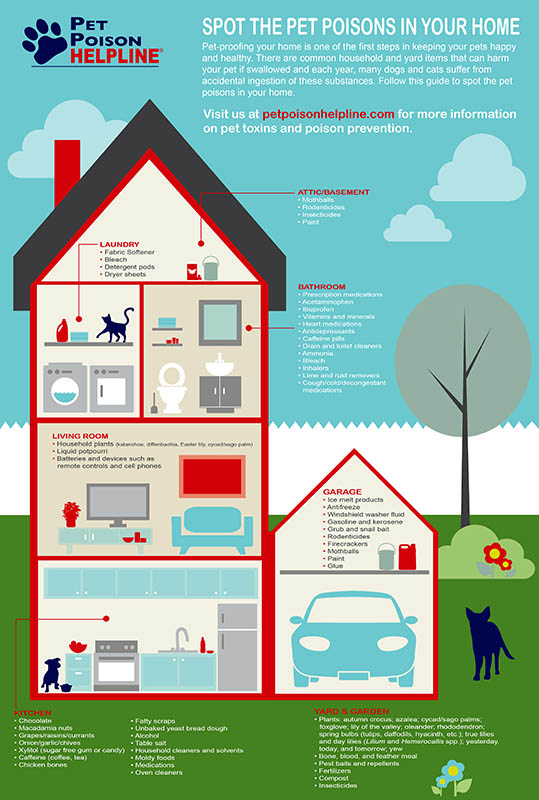Pet safety – the garden challenge
I grew up climbing over dogs, playing with them, taking them for walks and to the vet for inoculations/check ups, attempting to train them (!), feeding them and cleaning up behind them. It wasn’t until we had been in Australia for 15 years that I discovered just how woefully under informed I’d been with regards to the multitude of risks dogs face in and around their homes.
It turns out that large, deep-chested dogs (such as German Shepherds and Dobermans) are prone to a condition called bloat (Gastric dilatation-volvulus). Finding this out when we brought our 10 week old German Shepherd home was, quite simply, terrifying. The breeder put the fear-of-all-things-bloat-related into us, detailing the symptoms and the various and assorted steps we needed to take in order to minimise risks.
We’d had a German Shepherd in South Africa many years earlier, but had known none of this. Did he survive purely by chance, I wondered, or are some breed lines more predisposed towards getting bloat? Research provided me with more details on the condition and it became clear that it was probably a little of each, although this in no way lessened my paranoia with regards to the bloat issue.
The next eye-opener was plants. Suburban gardens don’t tend to be designed with pets in mind and often contain a number of potentially hazardous plants. Who’d have thought that tomato plants might be a problem? Or avocados, apricot kernels, azaleas, jasmine? Once again, it seems that my dogs have largely survived despite my ignorance on these matters.
With two young dogs in residence I’ve been doing some catch-up reading up on common household/garden risks. In the process, I came across a rather useful info graphic that outlines a wide range of the more obvious risks.
The more I read, the more I find – to the point where I’m starting to feel an overwhelming urge to do some serious garden revamping to deal with our more obvious risks (see highlighted plants, below). But I need a list to refer to, so I’ve compiled one based on information from sites such as Burke’s Backyard, Cornell University and a pet poisons helpline (recommended).
Whilst it’s not comprehensive or complete, it’s a good starting point. The printout’s stuck up on the fridge as a reminder – both to us and to visitors. If you know of any more or can add any details, please add them in as comments.
SOME TOXIC PLANTS TO BE AWARE OF AROUND PETS
aloe vera – the outer leaves
anemone or windflower – all parts of the plant
apple trees – stems, leaves, seeds
apricot kernels – contains amygdalin
avocados – (debatably)
azaleas – leaves, nectar, flowers
castor oil plant – seeds contain ricin
chalice vine – all parts of the plant
cherry tree – all parts of the plant
chocolate – contains methylxanthines
clematis (large flowered hybrids) – flowers
coffee – contains methylxanthines
cycads – seeds on female parts
daffodils – bulbs
dieffenbachia – plant contains insoluble calcium oxalate
elephant ear – plant contains insoluble calcium oxalate
euphorbias
ficus (all varieties) – milky sap in leaves and stems
foxglove – entire plant
garlic plants
golden robinia – bark, leaves, seed pods
grapes, sultanas, raisins
hellebore – the entire plant
hemlock – the entire plant
holly – berries
hyacinth – bulbs
hydrangea – flower buds
indoor plants: various
iris – foliage and bulbs
jasmine (not clear which ones)
jonquils – bulbs
lantana – foliage and berries
lilac – (possibly)
lillies – bulb, leaves, flowers
lily of the valley / mayflowers – plant, flowers
macadamia nuts
madagascar jasmine – seed pods
mountain laurel – leaves, nectar, flowers
mushrooms (not clear which ones)
narcissis – bulbs
nightshade – the entire plant
oaks – the acorns
oleanders – the entire plant
onions
philodendron (many, it appears)
pine
poinciana (the shrub, not the tree )
poinsettias
potato plants – the green parts
privet – needles and branches
pyracantha (not clear which one)
Rat baits
rhododendrons (including azaleas) – leaves, nectar, flowers
rhubarb – roots and uncooked leaves
Snail baits
snowdrops
snowflakes
strelitzias
stephanotis – fruit
sweet peas – seeds
toadstools
tomato plants – the green parts
tulips
walnuts – mouldy nuts near the ground
wandering jew – foliage
wisteria – entire plant
Yesterday Today & Tomorrow – plant, flowers
yew

Just a quick follow up on on this. In the event that your pet does ingest something dodgy, please bear in mind that your best and first port of call should be your local vet. Inducing your pet to regurgitate the item isn’t necessarily a good idea.